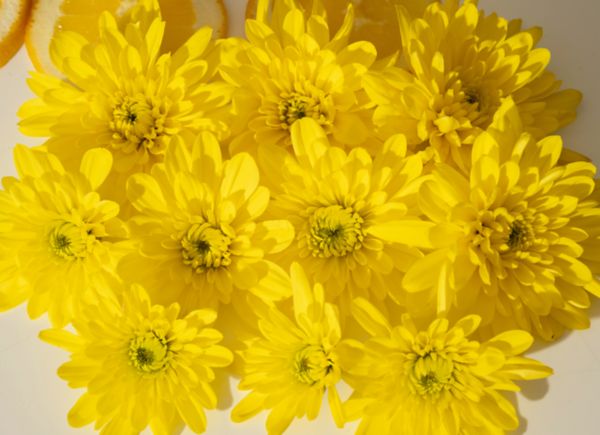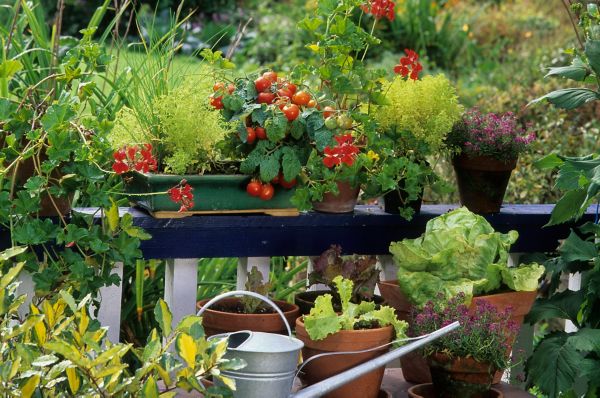How to Grow Watermelon
Authored by Leah Chester-Davis
When it comes to summer cookouts and family get togethers, watermelon is often the starring attraction. This no-guilt, no-fuss food is delicious when chilled and sliced into wedges for serving. It also can be used for granitas, slushes, and other drinks, in salads, salsas, and fruit bowls, and to make sorbets. It can even be grilled.
Few things say summer like an ice-cold watermelon. When the temperature gauge rises during long, hot days, watermelon is a refreshing fruit that offers up plenty of flavor without a lot of calories. It is made up primarily of water which makes it a popular go-to food during hot weather. It rehydrates while also packing a punch when it comes to lycopene, an antioxidant that may help reduce cancer and other health risks. It contains amino acids that contribute to heart health and vitamins A, B6, and C. Watermelon also has potassium which is believed to help control blood pressure.
Numerous varieties are available, and the shapes and sizes include large and small, and what is called personal size, which is typically less than 5 pounds as opposed to round ones that typically weigh 10 to 20 pounds, and oblong varieties that can get as large as 25 pounds or more. They may be solid green or striped. They may have red, pink, orange, or yellow flesh. They may have seeds or be seedless. They vary in sweetness.
About watermelons
| Botanical name: | Citrullus lanatus |
| Common name: | Watermelon |
| Plant type: | Annual |
| Size: | Vines up to 24 inches tall with an 8 foot or more spread; fruit 5 to 25 pounds or more, depending on variety |
| Sun exposure: | Sun |
| Soil type: | Well-drained, sandy loam |
| Soil pH: | 6.0 to 7.0 |
| Hardiness zones: | 2 to 11 |
| Average first frost: | Varies by region |
| Average last frost: | Varies by region |
| Container friendly: | No |
| Beginner friendly: | Yes |
Growing
Watermelons thrive in a sunny site. They prefer a sandy loam soil that is rich in organic matter, well-drained, and slightly acidic, 6.0 to 7.0 pH. If gardening in clay soil, add plenty of organic matter. A soil test will help determine needed amendments. In the absence of a soil test, add an inch of organic material such as compost or well-rotted manure. Work it into the soil. Do not use fresh manure; it may contain harmful bacteria. It can also increase weed problems.
Both seedless and seeded varieties are available. When growing seedless melons, you must also plant seeded varieties alongside or nearby to ensure adequate pollination and fruit set. Because seedless types do not put energy into seed production, Illinois Extension reports that the flesh is often sweeter than normal types and the vines are more vigorous as the season progresses.
To extend the season, plant different varieties with different maturity dates.
Gardeners in cooler climates with a shorter growing season may consider black plastic mulch to warm the soil, and floating row covers if planting before the last frost-free date or if temperatures are cool.
The number of seeds you plant depends on your space and your family’s preferences. About three to four watermelon plants per person should be adequate for fresh consumption. If you wish to freeze watermelon flesh for smoothies or slushes, plant extra. Watermelon vines take up a lot of space; for smaller gardens, bush varieties are available but may still take up several feet of space.
When growing seedless melons, you must also plant seeded varieties alongside or nearby to ensure adequate pollination and fruit set.
Planting
Plant after the soil has warmed. Planting dates vary from region to region, depending on soil temperature, which needs to be at least 60 degrees F. The best way to determine soil temperature is to purchase a soil thermometer, which runs around $10, from your local garden center.
Plant seeds directly into the garden or start seeds in peat pots or other biodegradable containers that can be placed directly into the garden soil when transplanting. Watermelon roots do not like to be disturbed. Start them three to four weeks before transplanting. Typically, transplants will be ready for harvest earlier than those direct seeded into the garden.
Give watermelon vines plenty of room to grow. Plant seed ½ inch to 1 inch deep in a hill, which is a mounded area about 6 to 8 inches high. Space hills about 6 feet apart. If planting more than one row, allow 6 to 8 feet between rows.
Some gardeners use plastic mulch, which helps warm the soil and typically allows for an earlier planting date. This may be helpful in climates where the growing season is shorter. Put down the plastic mulch before planting to facilitate the soil warm-up. Straw is an excellent mulch, but it can slow soil warming. If adding straw to control weeds, Minnesota Extension recommends applying it after the soil has warmed to 75 degrees.
Watermelon roots grow close to the soil surface. When removing weeds, pull by hand or lightly cultivate with a hoe or hand tool to avoid damaging the roots. Watermelons need one to two inches of water per week. Avoid getting the foliage wet to reduce foliar diseases. Drip or soaker hoses are effective.
As harvest time nears, gradually reduce watering as the fruits begin to ripen.
Fertilizing
- Maryland Extension recommends a starter fertilizer for transplants. Follow label directions.
- After vines develop runners, Utah State Extension recommends sidedressing with a nitrogen fertilizer. The recommendation is three to four tablespoons of 21-0-0 per plant, or use an organic fertilizer. Follow label directions. Water in thoroughly.
Controlling Pests, Diseases, and Other Problems
- Squash bugs, squash vine borers, and striped cucumber beetles can damage watermelons. Squash bugs typically feed on leaves; vine borers tunnel through the vines and the result is wilting vines; beetles eat leaves, stems and fruit, and may carry bacterial wilt. Insects sometimes overwinter in garden debris so remove any debris during fall clean-up. Considering watermelons need pollinators, if some type of treatment is needed, Minnesota Extension recommends using low-impact pesticides such as Neem or pyrethrins. Read the label directions.
- Damping off, bacterial wilt, powdery mildew, fungal leaf spot and fruit rot diseases can affect watermelons. When planting, make sure the soil temperature is at least 60 degrees F. Space plants to avoid overcrowding and to allow plenty of air movement. When irrigating or watering, avoid getting water on the foliage. Use drip or soaker hoses when possible. Keep weeds in check and remove any diseased plant material and rotten fruit from the garden.
- To reduce the risk of diseases, avoid planting where vine crops have grown the past four years.
Harvesting and Storing
Watermelon typically takes 70 to 130 days to reach maturity, depending on the variety.
Determining when a watermelon is ripe is an age-old question that often is followed by several suggestions such as thumping the melon and listening for a dull thud or hollow sound. While you may have a tried-and-true method, Arkansas Extension recommends the following when determining whether your home-grown melons are ready to harvest: the light green, curly tendrils on the stem near the point of attachment to the melon turn brown and dry; the surface color turns dull; the skin becomes resistant to penetration by the thumbnail and is rough to the touch; and the underside of the melon where it touches the ground turns from a light green to a yellowish color. Of course, you can employ the thump test if you wish.
Storing
Uncut melons can be stored about two weeks at room temperature. Before consuming, store melons in the refrigerator or a cooler for up to two days to chill them. Before cutting the melon, wash it to remove any dirt or potential bacteria.
Wrap cut melons with plastic wrap or cut into pieces and store in a glass or plastic container. Store in the refrigerator for up to 3 days. Chunks of watermelon that have had the seeds removed can be frozen. Use the frozen chunks for slushes or smoothies.
While the fleshy fruit is the most popular part of the melon, the rind can be pickled, stir-fried, or stewed.
Watermelon sorbet and granita can also be frozen for up to 3 months. An easy granita shared by Illinois Extension is to puree 5 cups watermelon (seeds removed), pour into 9 x 13 baking dish and stir in 1 cup sugar syrup and 2 tablespoons lemon juice. Freeze until frozen, about 4 hours. Serve by scraping the granita with a large spoon and placing in serving dishes. This refreshing treat serves 4.
Arkansas Extension recommends the following when determining whether your home-grown melons are ready to harvest: the light green, curly tendrils on the stem near the point of attachment to the melon turn brown and dry; the surface color turns dull; the skin becomes resistant to penetration by the thumbnail and is rough to the touch; and the underside of the melon where it touches the ground turns from a light green to a yellowish color.
Expert Tips
- Implementing sound cultural practices such as providing healthy soil for your plants, keeping weeds in check, ensuring even, adequate irrigation, and purchasing wilt-resistant plants go a long way toward success in the garden.
- Growing your own gives you a chance to try watermelons that may not be available in local markets. Check with your local garden center or Extension office for best varieties for your region.
Frequently asked questions
Why might my plants have few melons?
Poor melon set can be attributed to several factors such as poor cultural conditions like poor soil or cool or hot temperatures. It is particularly common during rainy weather when pollinating bees aren’t out and about.
Why do the ends of my melons turn black and rot?
This sounds like blossom end rot which can be a problem for both watermelons and tomatoes. Both need even, consistent irrigation, particularly as the fruit matures.
Why do watermelons split when almost ripe?
Too much water during the last couple of weeks of ripening can cause the melons to split. Gradually reduce watering as the fruits ripen.
What causes my plants to wilt even though there is adequate water?
This may be due to fusarium wilt, which is a soilborne disease. The best bet is to plant wilt-resistant varieties.
What causes the leaves around the crown of the plant to develop brown spots and then die?
There are several foliar diseases that can affect watermelons. Anthracnose, alternaria, and downy mildew are three and all cause similar spots or lesions. A fungicide may be needed. Follow label directions.
Will watermelons cross with other vine crops?
Watermelon varieties will cross with each other but not with other vine crops like cantaloupes, cucumbers, squash, or pumpkins.





